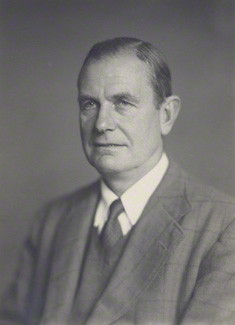Albert Chibnall facts for kids
Quick facts for kids
Albert Charles Chibnall
|
|
|---|---|
 |
|
| Born | 28 January 1894 |
| Died | 10 January 1988 (aged 93) |
| Nationality | British |
| Spouse(s) | Helen I C Chibnall (Cicely) Marjorie Morgan |
| Scientific career | |
| Fields | Biochemistry |
| Notable students | Fred Sanger |
Albert Charles Chibnall was a British biochemist who lived from 1894 to 1988. He was famous for his important discoveries about how plants use nitrogen. Nitrogen is a vital nutrient that helps plants grow and make proteins, which are essential for all living things.
Contents
Early Life and Education
Albert Charles Chibnall was born on January 28, 1894, in Hammersmith, England. He was the second son in his family. Sadly, his two brothers died serving in World War I.
Albert went to several schools as a child. He first attended a small local school, then Latymer Upper School, and later Colet Court. In 1907, he moved to St. Paul's School. He was a bright student and earned a special scholarship, called an Exhibition, to study at Clare College at Cambridge University.
War Service and Early Research
Albert started studying natural sciences at Cambridge. However, his studies were interrupted by World War I. He joined the Royal Army Service Corps and served for three years. In 1917, he decided to join the Royal Flying Corps and learned to fly planes in Cairo, Egypt. He earned his pilot's wings in 1918.
After the war, in 1919, Albert began research at Imperial College London. He focused on studying the nitrogen compounds found in green leaves. In 1921, he earned his PhD, which is a high-level university degree.
Discoveries in Biochemistry
Albert Chibnall spent a year working at the Chelsea Physic Garden. After that, he received a special scholarship to travel to the United States. There, he worked with a leading expert on plant proteins, T. B. Osborne, at the Connecticut Agricultural Experiment Station. This experience helped him learn even more about plant chemistry.
In 1924, he joined the laboratory at University College London. Later, in 1929, he became the head of Biochemistry at Imperial College London. His career continued to grow, and in 1943, he was appointed a professor at Cambridge University. He eventually stepped down from this role in 1949, believing it was better suited for a biochemist with a medical background.
One of Albert Chibnall's most famous students was Fred Sanger. Fred Sanger later became a Nobel Prize winner. Albert suggested that Fred work on finding ways to identify the ends of insulin proteins. When Fred published his important findings, Albert generously refused to have his name on the paper. He wanted Fred to get all the credit for his hard work. Fred Sanger showed the same kindness to his own students later in his career.
Family Life
Albert Chibnall married his cousin, Helen Isabel Cicely Chibnall, in 1931. They called her Cicely. They had their first child, Joan, in 1933. Sadly, Cicely passed away in 1936 while giving birth to their second daughter, who was also named Cicely.
In 1947, Albert married Marjorie McCallum Morgan. They had a daughter and a son together. Marjorie lived a long life and passed away in 2012 at the age of 96.
Albert Charles Chibnall died in Cambridge on January 10, 1988, at the age of 93.

